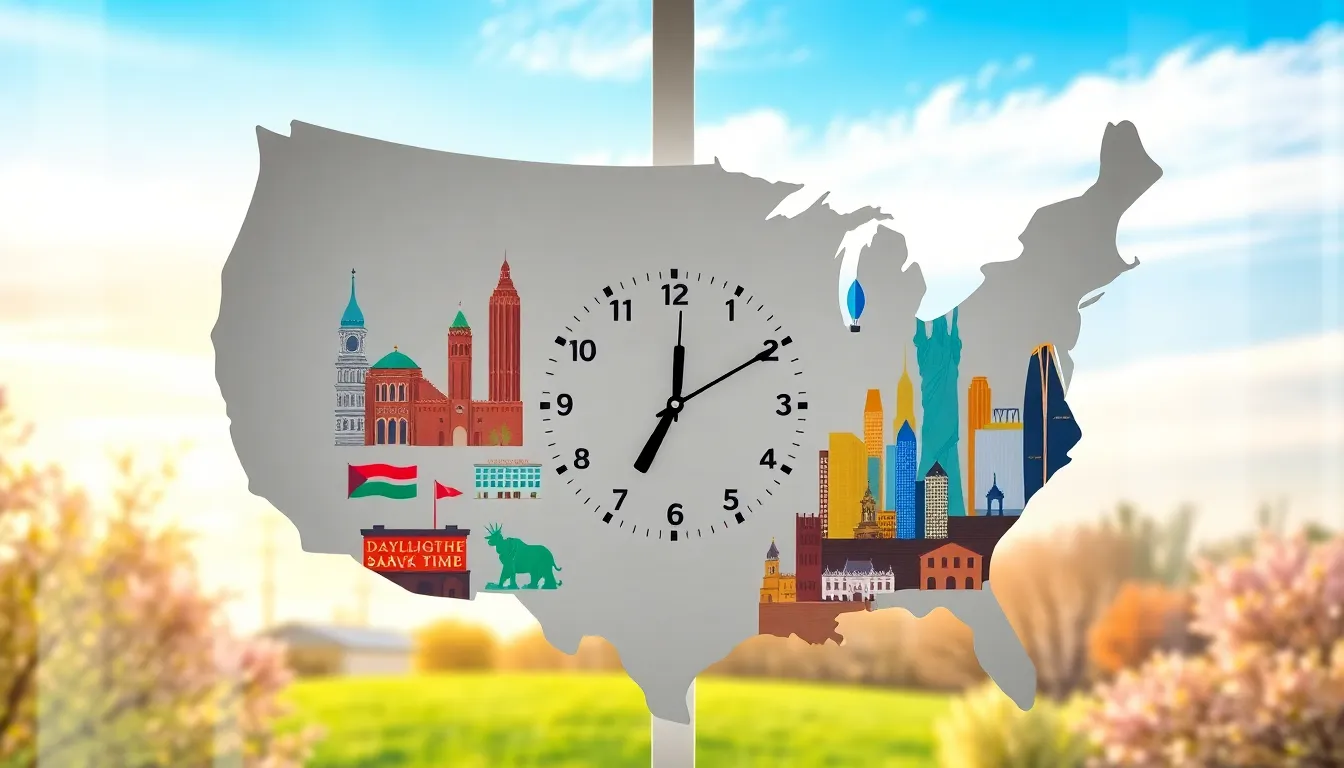Table of Contents
ToggleAs the days grow longer and the promise of warmer weather beckons, one question looms large: when do we spring forward in 2024? Daylight Saving Time is that quirky tradition that has us all scratching our heads and adjusting our clocks like it’s a high-stakes game of hide and seek. It’s the one time of year when losing an hour of sleep is somehow celebrated, and coffee becomes everyone’s best friend.
Overview of Daylight Savings Time
Daylight Saving Time (DST) impacts multiple nations, including the United States. This practice begins on the second Sunday in March, with clocks moving forward one hour. In 2024, the transition occurs on March 10. The intent behind DST includes extending daylight during evening hours, thus promoting outdoor activities.
During DST, many people adjust their routines. Some individuals adapt easily, while others struggle with the sudden time change. Sleep disruption commonly occurs as participants lose an hour of rest, leading to fatigue and decreased productivity. Research indicates that occurrences of heart attacks and accidents rise shortly after the clock change.
Critics question the effectiveness of Daylight Saving Time. Studies reveal mixed results regarding energy savings and benefits for overall health. Despite these discussions, many regions in the U.S. maintain the tradition, with exceptions in Arizona and Hawaii. These states do not observe DST, resulting in a consistent time year-round.
Various regions implement their own rules related to DST. Some countries start and end DST on different dates or abandon the practice altogether. Legislative changes or public opinion may influence future decisions about Daylight Saving Time in different locations. As society continues to evolve, the relevance of DST remains a topic of debate among lawmakers and citizens alike.
Key Dates for 2024

In 2024, Daylight Saving Time features two significant dates. Understanding these dates is essential for planning ahead.
Start Date
Daylight Saving Time begins on March 10, 2024. Clocks will spring forward one hour at 2:00 AM local time. Many people will experience a shift in their morning routines as they adjust to less sleep. Typically, this leads to a noticeable increase in sleepiness for the first few days. Research indicates that this adjustment period can cause a spike in accidents and health issues. It’s important for individuals to prioritize self-care during this transition to minimize negative impacts.
End Date
Daylight Saving Time ends on November 3, 2024. At 2:00 AM local time, clocks will fall back one hour, allowing for an earlier sunset. As daylight decreases in the evening, many will enjoy extended hours of sleep. This transition tends to facilitate a smoother adjustment compared to the start date. However, some still experience mild disruptions as their internal clocks recalibrate. Observers should prepare for this shift to help maintain regular daily routines.
History of Daylight Savings Time
Daylight Saving Time (DST) originated from the idea of conserving energy. Countries, including Germany and Austria, first implemented DST during World War I to reduce fuel consumption. In 1916, this practice intended to extend daylight hours for outdoor work and activities.
The United States adopted DST in 1918, also for wartime energy savings. After the war, DST fell out of favor until World War II, when it re-emerged to aid in resource conservation. Following the war, public interest waned, leading to inconsistent implementation across states.
In 1966, the Uniform Time Act standardized DST in the U.S. This legislation aimed to streamline time changes, establishing specific start and end dates for observation. Nevertheless, states retained the option to opt out, resulting in enduring inconsistencies.
Over the years, studies yield mixed evaluations of DST’s effectiveness. Some research suggests minimal energy savings, while others highlight negative health impacts. Issues such as increased heart attacks and accidents following clock changes have fueled ongoing debates regarding the tradition.
Today, many countries continue to observe DST, albeit with decreasing enthusiasm. Public opinion appears to shift towards abolishing the practice in favor of a more stable system. As modern society evolves, legislatures will evaluate the future relevance of DST, especially in light of its effects on daily life.
Effects of Daylight Savings
Daylight Saving Time (DST) carries various consequences that impact society in multiple ways. Adjustments during these transitions generate both positive and negative effects.
Positive Impacts
Extended daylight hours during evenings encourage outdoor activities. Increased opportunities for exercise and social gatherings often arise with more daylight. Citizens frequently partake in recreation, which can foster community and well-being. Businesses, particularly in the retail and tourism industries, often experience boosts in sales due to longer shopping hours. Research suggests that extended daylight can enhance overall mood, potentially reducing seasonal affective disorder symptoms. Productivity in the late afternoon may also improve when natural light prevails, benefiting employees’ performance.
Negative Impacts
Disruption in sleep patterns is a notable drawback of DST. Individuals frequently struggle to adjust, experiencing fatigue and reduced alertness. Consequently, productivity levels often decline in the days following the clock change. Health issues, including increased risks of heart attacks and accidents, become more prominent shortly after the shift. Research indicates higher accident rates on the Monday following the time adjustment, as tired drivers contribute to higher risks. Public concerns regarding these health implications continuously fuel the debate over DST’s effectiveness and relevance.
Daylight Saving Time 2024 brings both excitement and challenges as clocks spring forward on March 10. While many look forward to longer evenings filled with outdoor activities others may struggle with the abrupt change in their routines. The ongoing debate about the effectiveness and relevance of DST highlights its complex impact on society.
As individuals prepare for this transition it’s essential to prioritize self-care and adjust schedules gradually. Whether one embraces the extra hour of daylight or grapples with the effects on sleep patterns understanding the implications of DST can lead to a smoother experience. With continued discussions around its future it’s clear that the conversation about Daylight Saving Time isn’t over yet.




